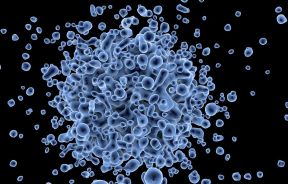Motivation Stems From Single Brain Region: The Posterior Cingulate Cortex Keeps You Going When Learning Is Tough

Although motivation seems to be central to learning and many other aspects of behavior, does anyone truly understand the relationship between the ability to acquire knowledge and rewards? In a recent study conducted at Duke University, researchers discovered that a dimly understood region of the brain is necessary to monitor your performance and maintain your motivation when you are learning, particularly when you are most challenged. This new discovery about the posterior cingulate cortex (PCC) appears in Neuron.
Learning and Remembering
Sarah Heilbronner, a Duke University graduate student, questioned whether the PCC actively dampens cognitive performance, for instance, by allowing the mind to wander — or is it monitoring and trying to improve performance? To understand the PCC's role in the process of learning, she designed an experiment around two rhesus macaque monkeys. After fitting the monkeys with electrodes that could “spell out” the activity of individual neurons in their brains, Heilbronner taught them a task that might be described as playing video games with their eyes. The monkeys were shown a series of photographs each day marked with dots at the upper left and lower right corners. By trial and error, the monkeys learned which target dot on each photo would yield a reward, a squirt of delicious juice, as they moved their gaze to it.
Daily the monkeys viewed up to 12 photographs of Yellowstone National Park and the Grand Canyon. Each day some of the day's pictures were familiar to the monkeys with a known reward target, while others were completely new. To create a sense of high-reward and low-reward answers, Heilbronner gave more juice when the monkeys correctly identified the target dots on some photos, and less juice on others. Meanwhile, she and her colleagues watched the activity of dozens of neurons in the monkeys’ brains as they moved their gazes around the dots, looking especially at activity immediately following correct and incorrect responses.
Heilbronner and her research team hypothesized that the PCC would be most active before a choice is made if its role is to actively dampen performance. Yet the neurons in the PCC lit up after the feedback, lasting sometimes until the next image was presented. The response of neurons in the PCC, then, was strongest whenever the monkeys needed to learn something new, especially when they had made errors or didn't earn enough reward to keep motivated. This suggested the PCC did not actively dampen performance or allow the mind to wander — quite the opposite.
Next, the researchers administered a drug that temporarily impaired the function of the PCC while the monkeys were performing their task. With the brain region inactivated, the monkeys could remember what they had learned earlier regardless of the size of the reward, and they could also learn something new when the reward was large. However, the monkeys could not learn something new when rewards were small. "Maybe it didn't seem worth it," Heilbronner suggested.
If the PCC’s role is to allow the mind to wander and diminish performance, the monkeys should have improved at their task when the drug was administered, but the opposite was clearly true.
"This study tells us that a healthy PCC is required for monitoring performance and keeping motivated during learning, particularly when problems are challenging," Michael Platt, director of the Duke Institute for Brain Sciences and supervisor of this study, stated. Heilbronner concluded that the PCC steps in during a cognitive challenge and summons more resources for a challenging task. Although her research is important in and of itself, more knowledge about the PCC is especially significant because this region of the brain is one of the first to deteriorate in patients with Alzheimer's disease (AD).
Posterior Cingulate Cortex
A part of the cingulate cortex, the PCC lies along a mid-line between the ears, where many structures related to rewards can be found. For some time, scientists have recognized that the entire cingulate cortex, which is situated in the outermost structure of neural tissue known as the cerebral cortex, plays a role when integrating sensory, motor, visceral, motivational, emotional, and mnemonic information. The PCC is also a highly connected and metabolically active brain region that connects to both learning and reward systems and so is a part of the default mode network.
"It's kind of a nexus for multiple systems," said Heilbronner, who now works as a postdoctoral researcher in neuroanatomy at the University of Rochester. Significantly, irregularities in the PCC have been linked to disease; functional neuroimaging studies have shown a relationship between abnormalities in this region and schizophrenia, autism, depression, aging, attention deficit hyperactivity disorder, and Alzheimer’s disease. “As this area begins to deteriorate, people begin to show the early signs of cognitive decline — problems learning and remembering things, getting lost, trouble planning — that ultimately manifest as outright dementia," Platt said in a press release.
In fact, researchers have identified amyloid deposition and reduced metabolism in the PCC early in the progress of Alzheimer’s disease. To better understand atrophy patterns in the brain, European scientists compared cingulate cortical volumes of 10 age and sex-matched controls with 10 patients suffering from early-onset familial AD. The researchers discovered that all four cingulate regions were significantly smaller in the cases of Alzheimer’s patients when compared with controls: rostral anterior cingulate gyrus (22.5 percent smaller), caudal anterior cingulate gyrus (20.7 percent smaller), posterior cingulate gyrus (44.1 percent smaller), and retrosplenial cortex (21.5 percent smaller).
“The atrophy in the posterior cingulate region was significantly greater than that in other cingulate regions, suggesting a higher vulnerability for this region in familial AD,” wrote the authors in their published study. More knowledge about the PCC, then, may bring great rewards not only to those researchers interested in learning, motivation, and memory, but also to those scientists investigating Alzheimer's disease.
Sources: Heilbronner S, Platt M. Causal evidence of performance monitoring by neurons in posterior cingulate cortex during learning. Neuron. 2013.
Jones BF, Barnes J, Uylings HBM, et al. Differential Regional Atrophy of the Cingulate Gyrus in Alzheimer Disease: A Volumetric MRI Study. Neuroscience. 2006.
Published by Medicaldaily.com



























